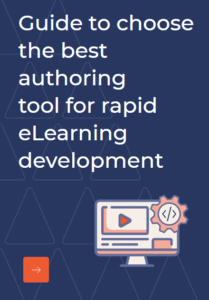Effective and Engaging - have become the prime focus for learning service providers these days, and rightly so because it points towards the final outcome of any learning initiative.
We had earlier shared a few tips to consider while converting eLearning to microlearning. Those tips work effectively when we have existing eLearning content to begin with. But, what do we have to consider when creating and entirely new microlearning course, say from scratch. How do we ensure that it is effective? Here are 8 questions you need to ask for doing it right.
Q1 - Do You Know the Learners?
Isn’t microlearning for the learners? For any kind of learning initiative to be successful, it is essential that the course creators understand their learners well. This would include a lot of things when it comes to corporate training, including industry, domain, technology used, level of skill etc. Microlearning being very short, crisp it become even more important to know your intended target audience very well.
Q2 - Defining the Learning Objective?
Microlearning is targeted and for this we as learning service providers have to be clear about the learning objective. What goals do we plan to achieve by using a particular microlearning course, what kind of behavioral or aptitude change do we foresee etc. are things we have to be exceptionally clear about.
Q3 - What Will It Be Used For?
As mentioned in a previous blog, microlearning has different purposes and can be used across the entire learning strategy in different ways. So, be clear about what the microlearning is to be used for, is it for preparation, self-discovery or reinforcement. Creating microlearning in accordance to the need makes it effective.
Q4 - How Will It Be Used?
Well, you might think it is the same question as before. But, it has more to it than what meets the normal eye. Here the question includes, the kind of device compatibility required, offline mode, file size issues etc. that need careful consideration too.
Q5 - Does It Have to Be Interactive?
We often associate engagement with interactivity. However, in case of microlearning even a well-designed video can be engaging without interaction. At the same time, it can be ineffective in certain cases where the learners have to essentially learn through interaction.
Q6 - Will Examples Help?
In most cases, real-life examples and scenarios are the best way to tackle complex topics. But, in some cases it can be unwanted too. So, understand the learning requirement, see whether an example would go well with the learning model and only then should we incorporate it in the microlearning.
Q7 - How Do We Make It Engaging?
Might sound like a funny question, after all that is the whole purpose of this blog, isn’t it? But, questioning yourself about how you would like certain things is often the best way to find the right answer. Put yourself in the learner’s shoes and imagine what kind of interactivity, engagement you would want.
Q8 - Can we use Videos, Interactives or Demos?
Though this question is tackled when we consider interactivity. But, still making a right choice amongst these three can make or break an effective microlearning course.
Though there are many more questions that can be asked. The above mentioned 8 cover most of the basic requirements. Microlearning created on basis of the answers for these will not only be effective, but also be relevant and efficient.
So, make this your checklist before creating any microlearning. And, if you feel lost while doing so, just drop us a message.



